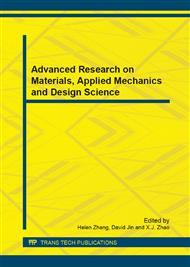p.271
p.276
p.280
p.284
p.290
p.294
p.301
p.306
p.310
Longitudinal Aerodynamic Modeling Based on Support Vector Machine
Abstract:
In order to accurately depict the longitudinal aerodynamic characteristics of flight vehicle, a new aerodynamic modeling method based on Support Vector Machine (SVM) is proposed. SVM is a machine learning method that solves the problem by mean of optimization method on the basis of statistics learning theory, and introduces the structural risk minimization to coordinate the relationship between fitting degree and generalization ability, and the training samples are mapped into high dimensional feature space for linear regression, which can solve the practical problems such as nonlinearity, high dimension, over-learning, local minima, curse of dimensionality and so on. The experimental result shows that the method has a good modeling accuracy and speed training, and also is easy to implement. It is fully competent for longitudinal aerodynamic modeling for flight vehicle.
Info:
Periodical:
Pages:
290-293
Citation:
Online since:
June 2013
Authors:
Price:
Сopyright:
© 2013 Trans Tech Publications Ltd. All Rights Reserved
Share:
Citation:


